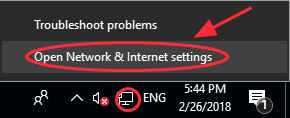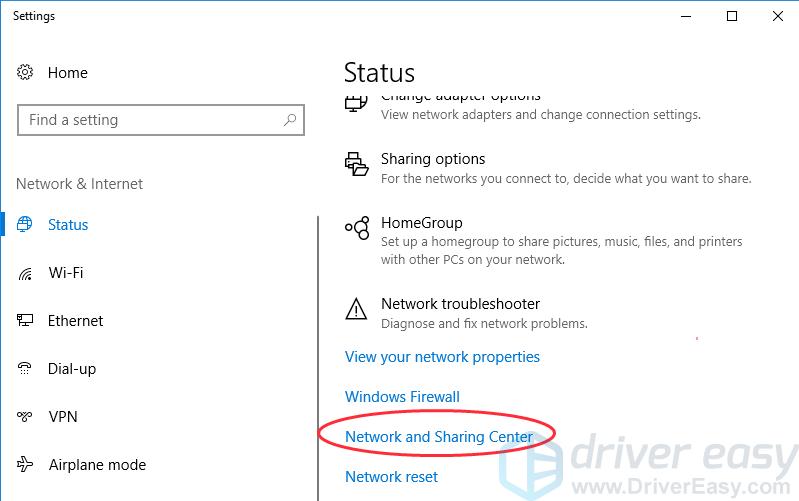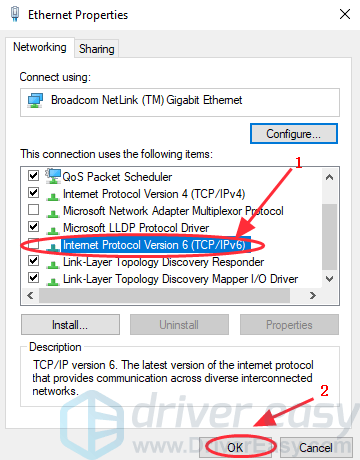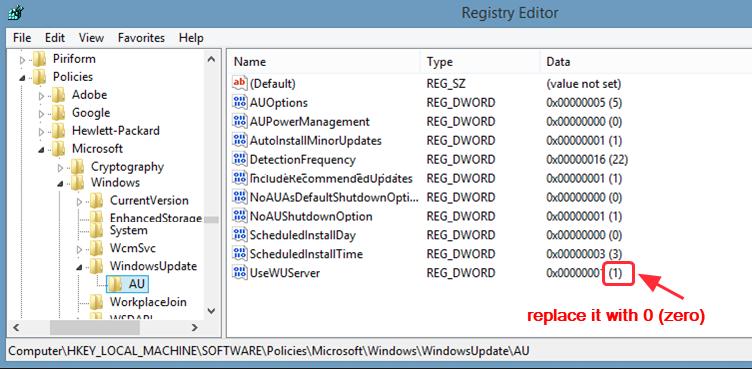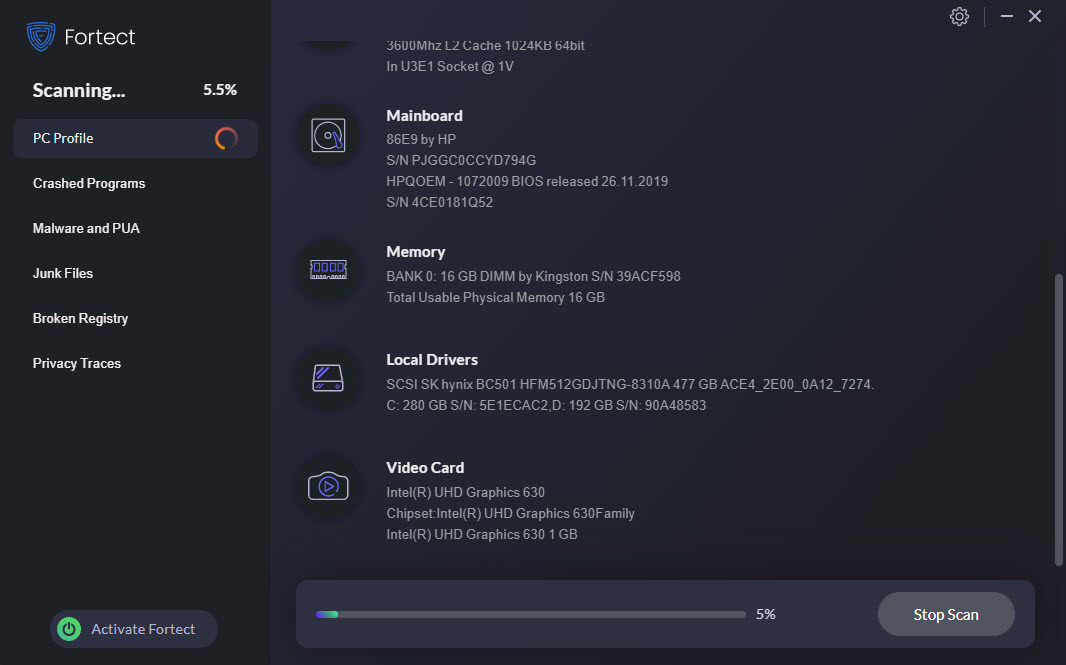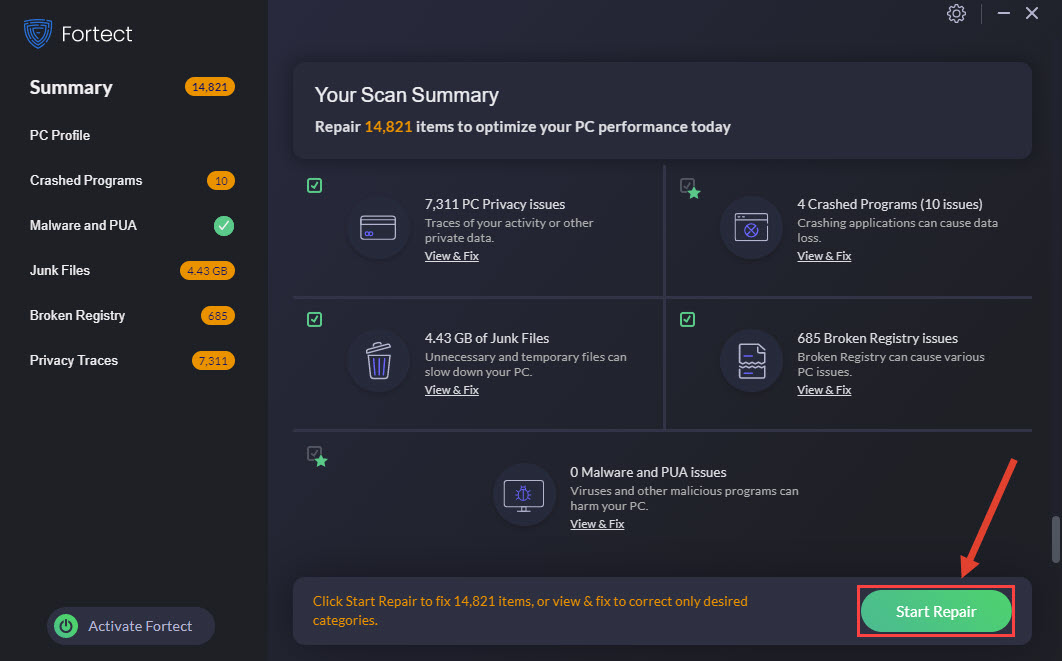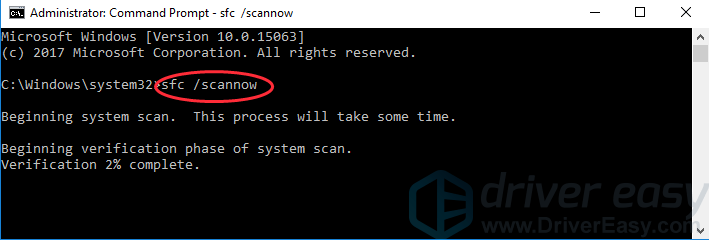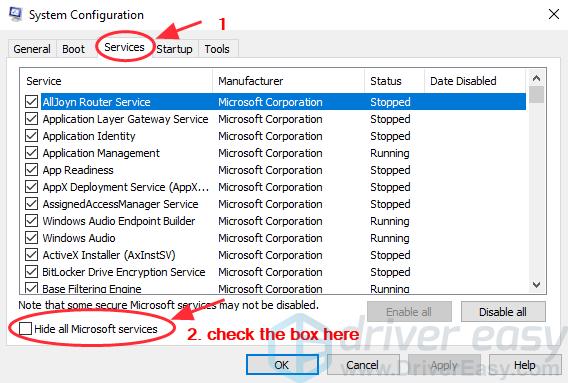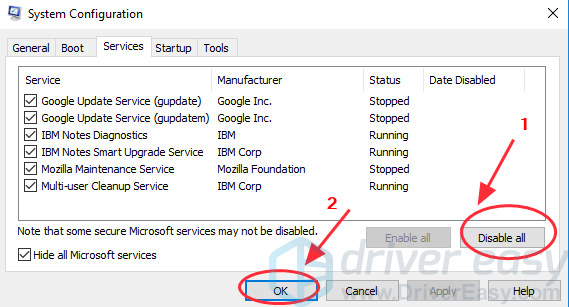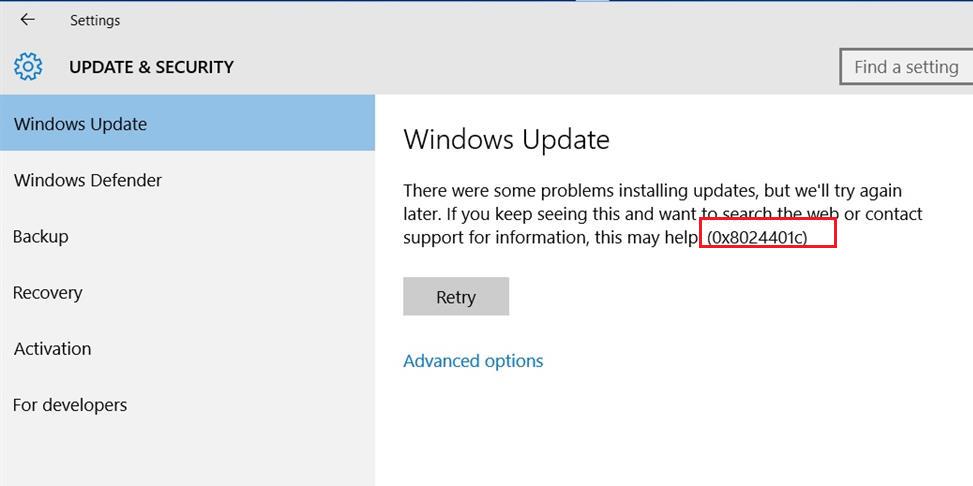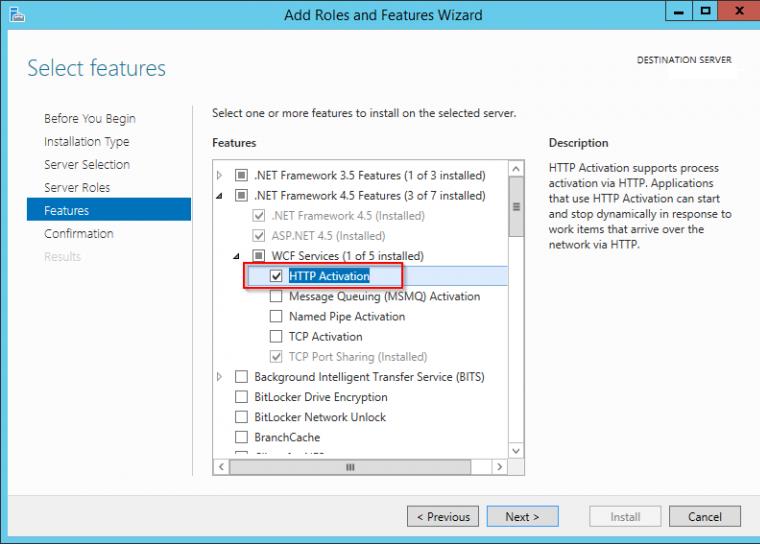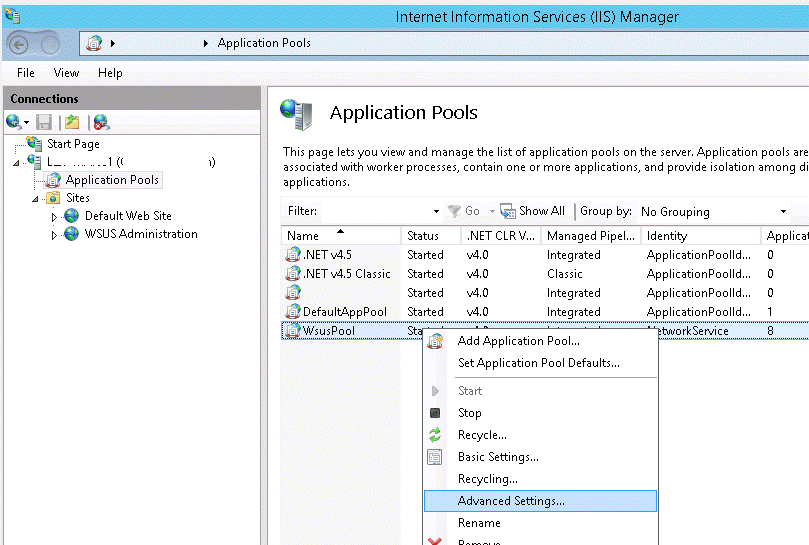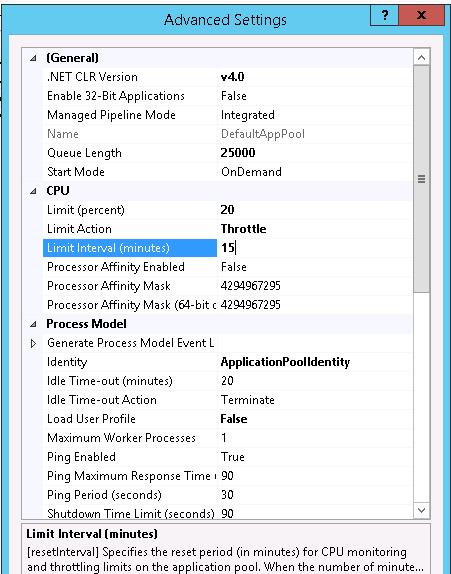If you see the Windows Update error 0x8024401c in your computer when running the Windows Update, you run into a problem installing the updates and have no idea what to do. No worries! There are fixes to the issue.
How do I fix 0x8024401c in Windows? Try these fixes:
- Check the network settings
- Update drivers
- Modify the setting in Registry Editor
- Repair system files
- Perform a clean boot
Why does 0x8024401c happen on my computer?
Why does the error occur? the error 0x8024401c usually occurs when you have problems installing or downloading the Windows updates in your computer.
The causes generally are the improper Internet connection, or the server timed out waiting for the request. Another reason is likely because of the inappropriate device drivers in your computer.
You can try the methods below to fix 0x8024401c in your computer.
Note: All the screenshots below are shown on Windows 10, and the fixes apply to Windows 8 & 7.
Method 1: Check the network settings to fix 0x8024401c
As mentioned above, the network issue can cause the 0x8024401c error, so you can check the following two settings of the network to fix the error.
1. Switch network connection in your computer
As many people know, switching the network connection fixes the issue.
Thus, if you are connecting to WiFi in your computer, you can try switching the WiFi connection to wired connection or Ethernet connection and try the Windows Update to see if it works. If you are using the wired connection, you can change to WiFi connection, then try the Windows Update again to see if it works.
2. Uncheck IPv6 network
If switching your network doesn’t work, you can try to uncheck the IPv6 network, and make your computer go with IPv4 network. Follow the instructions to do that:
1) Right click the Internet Icon at the bottom right corner on your computer, and click Open Network & Internet settings.
2) Click Network and Sharing Center.
3) Click Change adapter settings.
4) Right click the network connection (LAN, Ethernet or WiFi) that you are currently connecting, then click Properties.
5) In the popup pane, uncheck Internet Protocol Version 6 (TCP/IPv6). Then OK to save the setting.
6) Restart your computer and try to update your Windows again.
Method 2: Update drivers to fix 0x8024401c
The missing or outdated drivers in your computer can also stop the Windows Update from working, so you can update the drivers in your computer to fix it.
There are two ways you can update the drivers: manually or automatically.
Manual driver update – You can update your drivers manually by going to the manufacturer’s website and searching for the most recent correct driver.
Automatic driver update – If you don’t have the time, patience or computer skills to update your network card driver manually, you can, instead, do it automatically with Driver Easy. Driver Easy will automatically recognize your system and find the correct drivers for it:
1) Download and install Driver Easy.
2) Run Driver Easy in your computer, and click Scan Now. Driver Easy will then scan your computer and detect any problem drivers.
3) Click the Update button next to the flagged network card to automatically download and install the correct version of its driver (you can do this with the FREE version).
Or click Update All to automatically download and install the correct version of all drivers that are missing or outdated. (This requires Pro version – You’ll be prompted to upgrade if you click Update All.)
4) After updating all the drivers, restart your PC and try Windows Update again.
Method 3: Modify the setting in Registry Editor to fix 0x8024401c
You can try to modify the settings in Registry Editor to fix Modify the setting in Registry Editor to fix 0x8024401c in your computer. Follow these steps:
1) Press the Windows logo key 
2) Type regedit in the Run box, and click OK.
3) Go to HKEY_LOCAL_MACHINE > Software > Policies > Microsoft > Windows > WindowsUpdate.
4) Click AU in WindowsUdpate, and find UseWUServer.
5) Replace whatever is in the registry value data on the right pane with 0 (zero).
6) Click OK to save.
7) Restart the computer and try to install the update again.
Method 4: Repair system files
The 0x8024401c error may be related to system files. When the system files were broken or corrupted, it may cause a Blue screen issue.
There are 2 ways to solve it. Here’s how:
- Option 1- Automatically (Recommended)
Use a repair tool to check various areas in your computer to determine the cause of Windows common issues. It will deal with issues related to system errors, critical system files and find the right fix for you. - Option 2 – Manually
System File Checker is a built-in tool to check for corrupt, damaged system files and manage to restore them if there’re any. However, this tool can only diagnose major system files, and won’t deal with damaged DLL, Windows Registry key, etc.
Option 1 – Automatically (Recommended)
Fortect is a computer repair software that can diagnose problems on your computer and fix them immediately.
It is tailored to your specific system and is working in a private and automatic way. It will first check hardware-related issues to identify problems, and then security issues, and finally it detects programs that crash, missing system files. Once complete, it will find a solution to your specific problem.
- Download and install Fortect.
- Open Fortect and click Yes to run a free scan of your PC.
- Fortect will scan your computer thoroughly. This may take a few minutes.
- Once done, you’ll see a detailed report of all the issues on your PC. To fix them automatically, click START REPAIR. This requires you to purchase the full version. But don’t worry. If Fortect doesn’t solve the issue, you can request a refund within 60 days.
The Pro version of Fortect comes with 24/7 technical support. If you need any assistance, please contact Fortect support:
Email: support@fortect.com
Option 2 – Manually
The SFC (System File Checker) is a Windows utility that helps automatically check and repair the corrupted or incomplete system files, so you can run an SFC scan in your system and let it be automatically repaired if there are any issues.
1) Type cmd in the search box.
2) Right-click Command Prompt, and select Run as administrator.
3) Type sfc /scannow in the window, and press Enter.
4) This process can take some time, and it will try to automatically fix the issues after scanning. So don’t close the window until verification 100% complete. After it’s completed, restart your PC and try updating Windows again.
Method 5: Perform a clean boot
You can perform a clean boot in your system. Try the steps:
1) Press the Windows logo key 
2) Type msconfig in the Run box and click OK.
3) Click the Services tab, and check the box next to Hide all Microsoft services.
4) Click Disable all, then click OK.
5) Restart your system and check for the updates.
These are the useful methods to fix Windows Update error 0x8024401c. If you have any further questions, feel free to comment below and we’ll see what more we can do to help.
Данная статья посвящена устранению ошибки 0x8024401c при поиске и загрузке обновлений с сервера WSUS. Проявлятся она может на клиентских машинах на Windows 10, Windows 2012 и 2016 server.
Сам текст ошибки выглядит следующим образом:
There were some problems installing updates, but we’ll try again later. If you keep seeing this and want to search the web or contact support for information, this may help: (0x8024401c)
Если посмотреть список кодов ошибок обновления Windows, то увидим, что ошибка 0x8024401C означает превышение таймаута ответа от клиента: WU_E_PT_HTTP_STATUS_REQUEST_TIMEOUT — HTTP status 408 — the server timed out waiting for the request.
Возникать она может, скажем, при слишком большом числе обращений к серверу, недостатке его ресурсов и в других подобных ситуациях.
Сначала проверим журнал ошибок, где скорее всего увидим что-то подобное:
2020-01-19 14:11:24:870 816 1244 WS WARNING: There was an error communicating with the endpoint at 'http://server-wsus:8530/ClientWebService/client.asmx'. 2020-01-19 14:11:24:870 816 1244 WS WARNING: There was an error receiving the HTTP reply. 2020-01-19 14:11:24:870 816 1244 WS WARNING: The operation did not complete within the time allotted. 2020-01-19 14:11:24:870 816 1244 WS WARNING: The operation timed out
Проверим доступность страницы http://server-wsus:8530/ClientWebService/client.asmx , на которую указывают логи. Если все в порядке и сама страница обновления доступна, идем дальше(иначе — разбираемся в причинах на самом WSUS-сервере или доступности его)
Перед выполнением каких-либо действий, убеждаемся что установлены необходимые обновления на WSUS-сервере, если требуется — устанавливаем вручную.
Предположим, WSUS-сервер работает на Windows server 2012(для 2016 действия будут, в общем-то, аналогичны) — проверяем базу знаний Microsoft, где есть соответствующая статья KB3159706 (Update enables ESD decryption provision in WSUS in Windows Server 2012 and Windows Server 2012 R2)
Согласно статье, необходимо установить обновление KB3159706, а также выполнить некоторые действия, иначе может перестать открываться консоль WSUS.
Выполняем:
1.
"C:\Program Files\Update Services\Tools\wsusutil.exe" postinstall /servicing
2.
Проверяем, установлен ли компонент.NET Framework 4.5 -> HTTP Activation
Get-WindowsFeature -Name NET-WCF-HTTP-Activation45
Если нет, устанавливаем вручную (через Add Roles and Features Wizard)
3.
В случае, если используется SSL на сервере WSUS, редактируем C:\Program Files\Update Services\WebServices\ClientWebService\Web.config согласно рекомендациям KB3159706, иначе пропускаем пункт
4.
Редактируем файл config ( C:\Program Files\Update Services\WebServices\ClientWebService\web.config ), заменив строку<httpRuntime maxRequestLength=»4096″ /> на <httpRuntime maxRequestLength=»204800″ executionTimeout=»7200″/>
5. Перезапускаем службу WSUS:
Get-Service -Name WsusService | Restart-Service -Verbose
6.
С помощью консоли IIS Manager вносим изменения в настройки пула WsusPool (Application Pools -> WsusPool -> Advanced settings)
- Private Memory Limit (KB) – ставим 0 ( убирается лимит на использование памяти рабочим процессов WSUS, значение может быть иным, если вы опасаетесь перегрузить сервер процессами WSUS)
- Queue Length — 25000 (увеличиваем длину очереди к пулу приложения, дефолтное значение — 10000)
- Limit Interval (minutes) — 15 (увеличиваем с 5 до 15 минут время для сброса счетчиков и выполнения CPU Throttling)
- Service Unavailable Response — TcpLevel (при старом значение HttpLevel клиенту возвращается ошибка HTTP 503, при значении TcpLevel соединение просто сбрасывается)
Затем в настройках WSUS Administration -> Advanced settings нужно изменить значение Connection Time-out со 180 до 320, увеличив время таймаута.
Перезапускаем IIS:
IISReset
Далее проверяем работу служб, и ждем следующего сеанса обновлений клиентов.
Аналогичным образом можно перенастраивать WSUS и в windows 2016, при обнаружении недостатков ресурсов.
- Remove From My Forums
-
Question
-
Windows Server 2012 R2 Standard upgraded from 2008R2. After upgrade I receive the error: 0x8024401c when trying to update.
I do not use a proxy. I have tried the Windows Update troubleshooter, and clearing the software distribution folder and restarting the update service.
First Fatal entry on log: 13fc WS FATAL: OnCallFailure(hrCall, m_error) failed with hr=0x8024401c
First fatal log section:
13:58:37:783 968 13fc Setup Skipping SelfUpdate check based on the /SKIP directive in wuident
2015-07-22 13:58:37:783 968 13fc Setup SelfUpdate check completed. SelfUpdate is NOT required.
2015-07-22 13:59:06:921 968 13fc PT +++++++++++ PT: Synchronizing server
updates +++++++++++
2015-07-22 13:59:06:921 968 13fc PT + ServiceId = {9482F4B4-E343-43B6-B170-9A65BC822C77}, Server URL = https://fe2.update.microsoft.com/v6/ClientWebService/client.asmx
2015-07-22 13:59:06:984 968 13fc Agent Reading cached app categories using lifetime 604800 seconds
2015-07-22 13:59:06:984 968 13fc Agent Read 1 cached app categories
2015-07-22 14:00:34:515 968 13fc WS WARNING: Nws Failure: errorCode=0x803d0006
2015-07-22 14:00:34:531 968 13fc WS WARNING: Original error code: 0x80072ee2
2015-07-22 14:00:34:531 968 13fc WS WARNING: There was an error communicating with the endpoint at ‘https://fe2.update.microsoft.com/v6/ClientWebService/client.asmx’.
2015-07-22 14:00:34:531 968 13fc WS WARNING: There was an error receiving the HTTP reply.
2015-07-22 14:00:34:531 968 13fc WS WARNING: The operation did not complete within the time allotted.
2015-07-22 14:00:34:531 968 13fc WS WARNING: The operation timed out
2015-07-22 14:00:34:531 968 13fc WS WARNING: Web service call failed with hr = 8024401c.
2015-07-22 14:00:34:531 968 13fc WS WARNING: Current service auth scheme=’None’.
2015-07-22 14:00:34:531 968 13fc WS WARNING: Proxy List used: ‘(null)’, Bypass List used: ‘(null)’, Last Proxy used: ‘(null)’,
Last auth Schemes used: ‘None’.
2015-07-22 14:00:34:531 968 13fc WS FATAL: OnCallFailure(hrCall, m_error) failed with hr=0x8024401c
2015-07-22 14:00:34:531 968 13fc PT WARNING: PTError: 0x8024401c
2015-07-22 14:00:34:531 968 13fc PT WARNING: SyncUpdates_WithRecovery failed.: 0x8024401c
2015-07-22 14:00:34:531 968 13fc PT WARNING: Sync of Updates: 0x8024401c
2015-07-22 14:00:34:531 968 13fc PT WARNING: SyncServerUpdatesInternal failed: 0x8024401c
2015-07-22 14:00:34:531 968 13fc Agent * WARNING: Failed to synchronize, error = 0x8024401C
2015-07-22 14:00:34:546 968 13fc Agent * WARNING: Exit code = 0x8024401C
2015-07-22 14:00:34:546 968 13fc Agent *********
2015-07-22 14:00:34:546 968 13fc Agent ** END ** Agent: Finding updates [CallerId = AutomaticUpdatesWuApp
Id = 1]
2015-07-22 14:00:34:546 968 13fc Agent *************Any ideas or help would be appreciated. Thank you.
8024401c
Today, I build a new Windows Server 2012 machine on Hyper-V and I found that my Windows Updates were not working. All I got was an annoying 8024401C code.
Then I found this article with many useless answers and one useful answer.
All I had to do was disable IP 6 and my updates started to work.
Related
By Pieter Veenstra
Business Applications and Office Apps & Services Microsoft MVP working as a Microsoft Productivity Principal Consultant at HybrIT Services. You can contact me using contact@veenstra.me.uk.
Related Post
2 thoughts on “Windows Server 2012 – Windows update error code 8024401C”
-
Great stuff from you, man. I’ve read your stuff before and you’re just too awesome. I love what you’ve got here, love what you’re saying and the way you say it. You make it entertaining and you still manage to keep it smart. I can’t wait to read more from you. This is really a great blog.
Server 2016 Consultants
-
Leave a Reply
This site uses Akismet to reduce spam. Learn how your comment data is processed.
У одного из заказчиков столкнулись с проблемой обновлений новых ПК с Windows 10 1607 и Windows Server 2016 с внутреннего WSUS сервера (на Windows Server 2012 R2). Компьютеры Windows 10 появляются в консоли WSUS, но при запуске поиска обновлений, клиент очень долго пытается их найти и возвращает ошибку 0x8024401c.
There were some problems installing updates, but we’ll try again later. If you keep seeing this and want to search the web or contact support for information, this may help: (0x8024401c)
Согласно списка кодов ошибок центра обновления Windows ошибка 0x8024401C означает превышение таймаута ответа от клиента: WU_E_PT_HTTP_STATUS_REQUEST_TIMEOUT — HTTP status 408 — the server timed out waiting for the request.
В новом журнале логов службы Windows Update Windows 10 при этом также периодически фиксируется ошибка, связанная с таймаутом ответа WSUS.
2017-05-30 14:11:24:870 816 1244 WS WARNING: There was an error communicating with the endpoint at 'http://msk-wsus:8530/ClientWebService/client.asmx'.
2017-05-30 14:11:24:870 816 1244 WS WARNING: There was an error receiving the HTTP reply.
2017-05-30 14:11:24:870 816 1244 WS WARNING: The operation did not complete within the time allotted.
2017-05-30 14:11:24:870 816 1244 WS WARNING: The operation timed out
Сама страница ‘
http://msk-wsus:8530/ClientWebService/client.asmx
‘ при этом с клиента доступна и открывается, т.е. возникает такое ощущение, что сервер WSUS или клиент просто не успевают выполнить некую операцию и клиент отваливается по таймауту. Возможно при инициирующем сканировании, новому клиенту WSUS прилетает слишком большой список обновлений, в результате чего достигаются некие лимиты рабочего процесса IIS.
Чтобы решить проблему с клиентами, мне пришлось сначала установить на сервере WSUS обновление KB3159706 (на сервере должен быть установлен Wndows Server 2012 R2 Update 1).
В статье KB3159706 (Update enables ESD decryption provision in WSUS in Windows Server 2012 and Windows Server 2012 R2) обратите внимание на ручные действия, которые нужно выполнить после установки обновления (иначе может перестать открываться консоль WSUS).
- Выполнить команду
"C:\Program Files\Update Services\Tools\wsusutil.exe" postinstall /servicing
- Проверить, установлен ли компонент.NET Framework 4.5 -> HTTP Activation (
Get-WindowsFeature -Name NET-WCF-HTTP-Activation45
), и если он отсутствует, установить: - Если на WSUS используется SSL, нужно выполнить редактирование файла C:\Program Files\Update Services\WebServices\ClientWebService\Web.config в соответствии с рекомендациями в статье (в нашем случае этот пункт выполнять не пришлось).
- Отредактируйте файл config ( C:\Program Files\Update Services\WebServices\ClientWebService\web.config ), заменив строку
<httpRuntime maxRequestLength="4096" />
на
<httpRuntime maxRequestLength="204800" executionTimeout="7200"/> - Осталось перезапустить службу WSUS с помощь PoSh:
Get-Service -Name WsusService | Restart-Service -Verbose
Далее с помощью консоли IIS Manager нужно внести следующие изменения в настройки пула WsusPool (Application Pools -> WsusPool -> Advanced settings)
- Private Memory Limit (KB) – 0 (было 1258015, убирается лимит на использование памяти рабочим процессов WSUS, в результате служба может использовать более 1,2 Гб памяти)
- Queue Length — 25000 (увеличиваем длину очереди к пулу приложения с 10000)
- Limit Interval (minutes) — 15 (увеличиваем с 5 минут до 15 минут время для сброса счетчиков и выполнения CPU Throttling)
- Service Unavailable Response — TcpLevel (при старом значение HttpLevel клиенту возвращается ошибка HTTP 503, теперь соединение просто сбрасывается)
Затем в настройках сайта WSUS Administration -> Advanced settings нужно изменить значение Connection Time-out со 180 до 320.
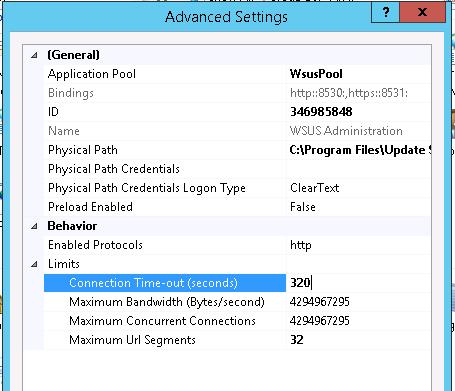
IISReset
Теперь мы увеличили таймауты и ресурсы сервера, требуемые клиентам Windows 10 для поиска и проверки обновлений на сервере обновлений WSUS. На следующий день – все клиенты смогли обнаружить и установить все требуемые обновления.


